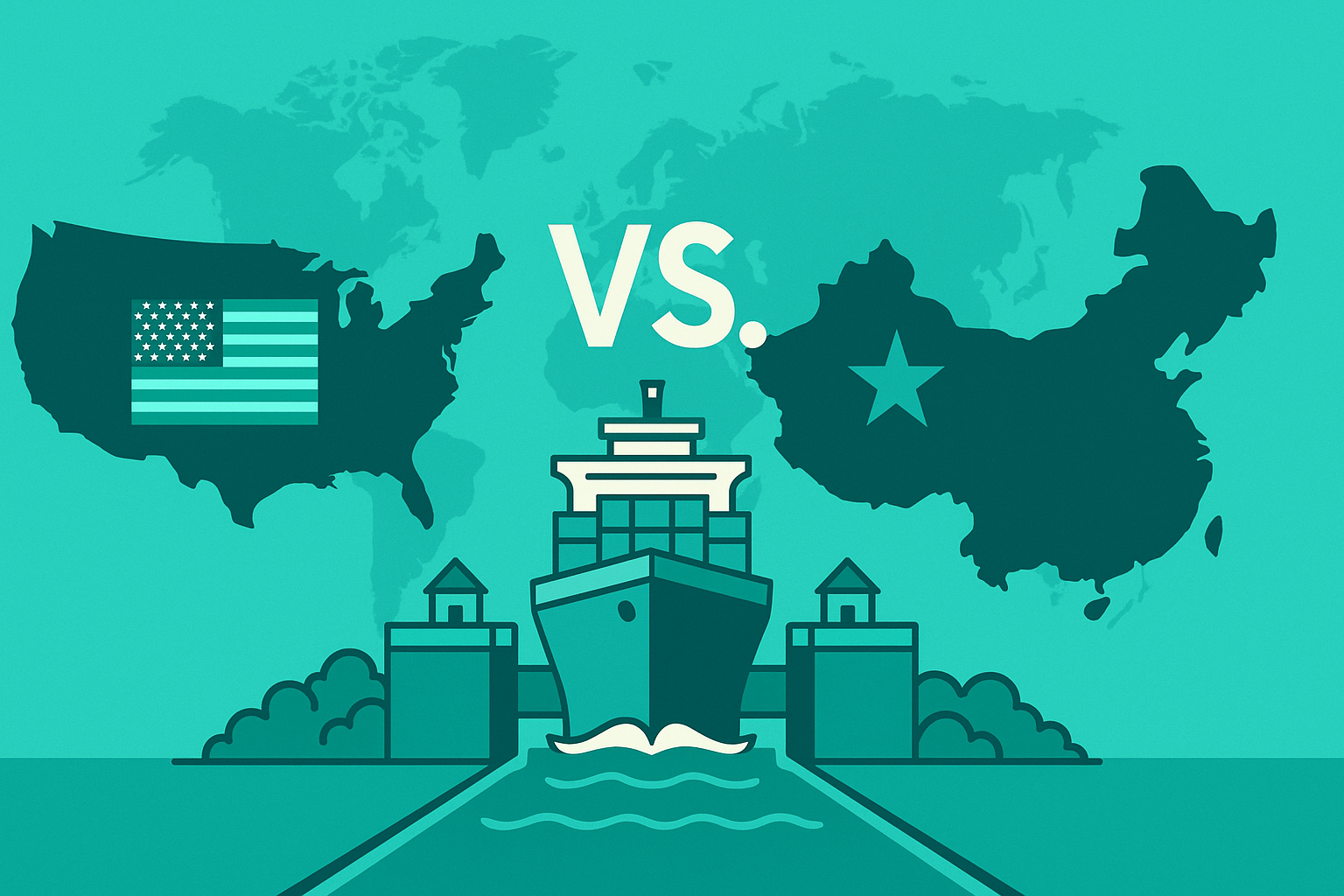— Strategic Infrastructure, Global Trade, and the Battle for Maritime Supremacy —
Introduction: The Reemergence of a Strategic Chokepoint
The Panama Canal facilitates approximately 5–6% of global maritime trade and serves as a critical corridor connecting the Pacific and Atlantic Oceans. For the United States, it enables rapid naval deployment, reduces shipping time for agricultural and industrial goods, and represents a cornerstone of maritime strategy.
For China, the Canal is not only a vital link to Latin American trade but also a strategic node in its Belt and Road Initiative (BRI). As both powers pursue overlapping goals in global infrastructure and logistics dominance, the Panama Canal has once again become a geopolitical flashpoint.
The U.S.–China Confrontation: Strategic and Economic Drivers
U.S. Strategic Posture
- Security First: Since returning to office in 2025, Donald Trump has declared the intention to “reclaim the Panama Canal from Chinese influence.” The U.S. supports the acquisition of canal-side port assets by a consortium led by BlackRock and MSC, while firmly opposing Chinese participation.
- Military and Diplomatic Measures: The U.S. signed a renewed security agreement with Panama, enabling military redeployment near the Canal, effectively reasserting its pre-1999 influence.
China’s Expanding Footprint
- Belt and Road Integration: China is aggressively investing in Latin American infrastructure, with state-owned enterprises like COSCO seeking control over key ports.
- Strategic Diversification: China aims to secure the westward extension of its maritime Silk Road, ensuring steady flows of energy, rare metals, and agricultural goods from South America.
The Triple-Layered Conflict Over Port Assets
| Layer | Stakeholder | Key Dynamics |
|---|---|---|
| Commercial | CK Hutchison (Hong Kong) | Divesting global port portfolio for returns |
| Geopolitical | U.S. vs China (via COSCO) | Influence, control, and political leverage |
| Regulatory | Antitrust agencies worldwide | Multinational approval process causing delays |
CK Hutchison is divesting 43 global ports to a consortium including BlackRock and MSC. However, political pressure from Beijing is pushing for COSCO’s inclusion, creating a stalemate at the nexus of commerce and security.
Economic Implications: Trade Routes and Market Volatility
Delays and Trade Costs
- Recent droughts have reduced canal traffic, increasing transit time and freight costs. Chinese investment could ease the burden, but tensions stall long-term infrastructure plans.
- Grain, LNG, and container shipping prices are already experiencing volatility, especially for U.S. and South American exports.
Spillover into Financial Markets
- The dispute has introduced geopolitical risk premiums into equities, shipping ETFs, and commodity futures.
- U.S. Treasuries are indirectly affected as investors weigh security risks associated with global logistics chokepoints.
Scenario Analysis: Possible Trajectories
Scenario A: Compromise Framework
- COSCO is allowed minority participation, excluding Panama specifically.
- Both sides preserve face; U.S. maintains de facto operational influence.
- Markets stabilize; regulatory scrutiny continues but with less tension.
Scenario B: Breakdown and Chinese Exclusion
- COSCO is removed from negotiations; China retaliates via alternative Latin American investment initiatives.
- Broader geopolitical competition intensifies, affecting global commodity flows.
- Volatility rises in emerging markets and raw materials.
Scenario C: Strategic Reversal in China’s Favor
- COSCO gains operational sway over canal-adjacent ports.
- The U.S. counters with retaliatory sanctions or military posturing.
- Latin America tilts further toward Chinese influence, sparking concerns over debt, currency alignment, and security architecture.
Conclusion & Strategic Recommendations
The Panama Canal is no longer merely a maritime corridor—it is a strategic battleground for 21st-century influence. From the perspective of an economist, the situation presents a high-consequence risk for supply chains, trade dynamics, and regional alignment. The following recommendations are proposed:
- ✅ Diversify Supply Chains: Reassess exposure to the Panama route, especially for critical goods.
- ✅ Model Port-Linked Risk Premiums: Integrate geopolitical risk into shipping and energy price forecasts.
- ✅ Use ESG + Security Screens: Evaluate maritime and port equities with emphasis on political neutrality and operational transparency.


